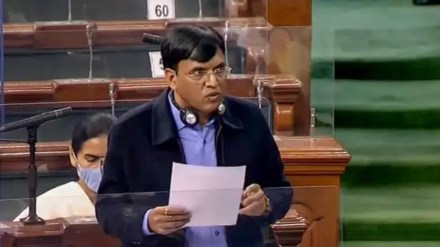Fertiliser minister Mansukh Mandaviya on Wednesday cautioned global fertiliser companies against cartelisation and “situation-based pricing”. This follows a 20% spike in global prices of di-ammonium phosphate (DAP), a soil nutrient which India imports in large quantities, over the last two weeks.
“This is not the time for profiteering for the short-term … long-term collaboration with companies for imports of fertilisers may get impacted,” Mandaviya said at a seminar organised by the Fertiliser Association of India.
Citing that global DAP prices rose to $540/tonne from $440/tonne in a fortnight, he urged the fertiliser manufacturers to avoid sharp fluctuations in the soil nutrients prices, and called for ‘India-specific prices,” given that the country is a major importer.
Nearly half of country’s DAP requirements are imported – mainly from West Asia and Jordan–, while the domestic Muriate of potash (MoP) demand is met solely through imports (from Belarus, Canada and Jordan, etc).
India meets about 75-80% of the volume of consumption of urea from domestic production while the rest is imported from Oman, Egypt, the UAE, South African and Ukraine.
In terms of volume, imports account for a third of domestic soil nutrients consumption of around 65 million tonne (MT) annually.
Mandaviya said during the past 2-3 years, the Government has absorbed the impact of high global commodity prices and ensured the availability of fertilisers at stable subsidised prices.
“This has resulted in stable fertiliser consumption and a record agricultural output during these years, as compared to degrowth in consumption globally,” he said.
FY24 subsidy
Source said the fertiliser subsidy in FY24 is likely to cross the budget estimate of Rs 1.75 trillion.The government has spent 70% of the total budget in the first seven months of current fiscal.
During the April-October period of the current fiscal, there has been a rise in fertiliser consumption to more than 41 million tonne compared to previous year. Consumption of fertilizers have increased urea (7.5%), DAP (17%) and muriate of potash (6%) compared to previous year.
Fertiliser subsidy in FY23 stood at an all-time high of Rs 2.53 trillion, owing to the spike in global commodity prices. It was for the third year in a row that fertiliser on soil nutrients had crossed 1 trillion.
Retail prices of phosphatic and potassic (P&K) fertilisers, including DAP were ‘decontrolled’ in 2010 with the introduction of a ‘fixed-subsidy’ regime as part of NBS mechanism. he government announces NBS for kharif and rabi seasons
In the case of urea, farmers pay a fixed price of Rs 266 per bag (45 kg) against the cost of production of around Rs 2650 per bag. The balance is provided by the government as a subsidy to fertiliser units.
